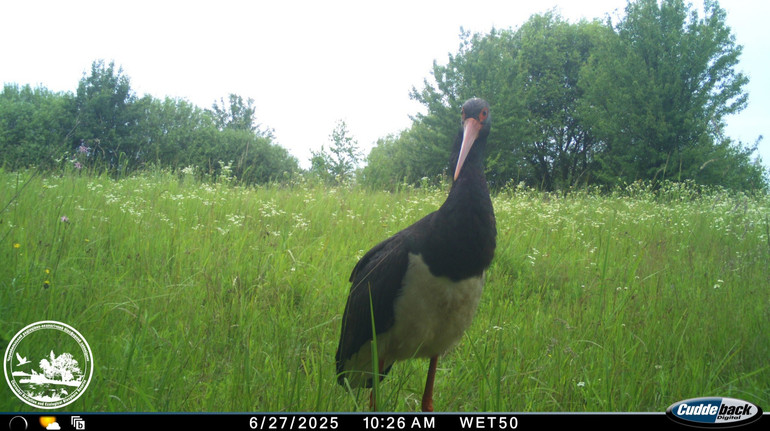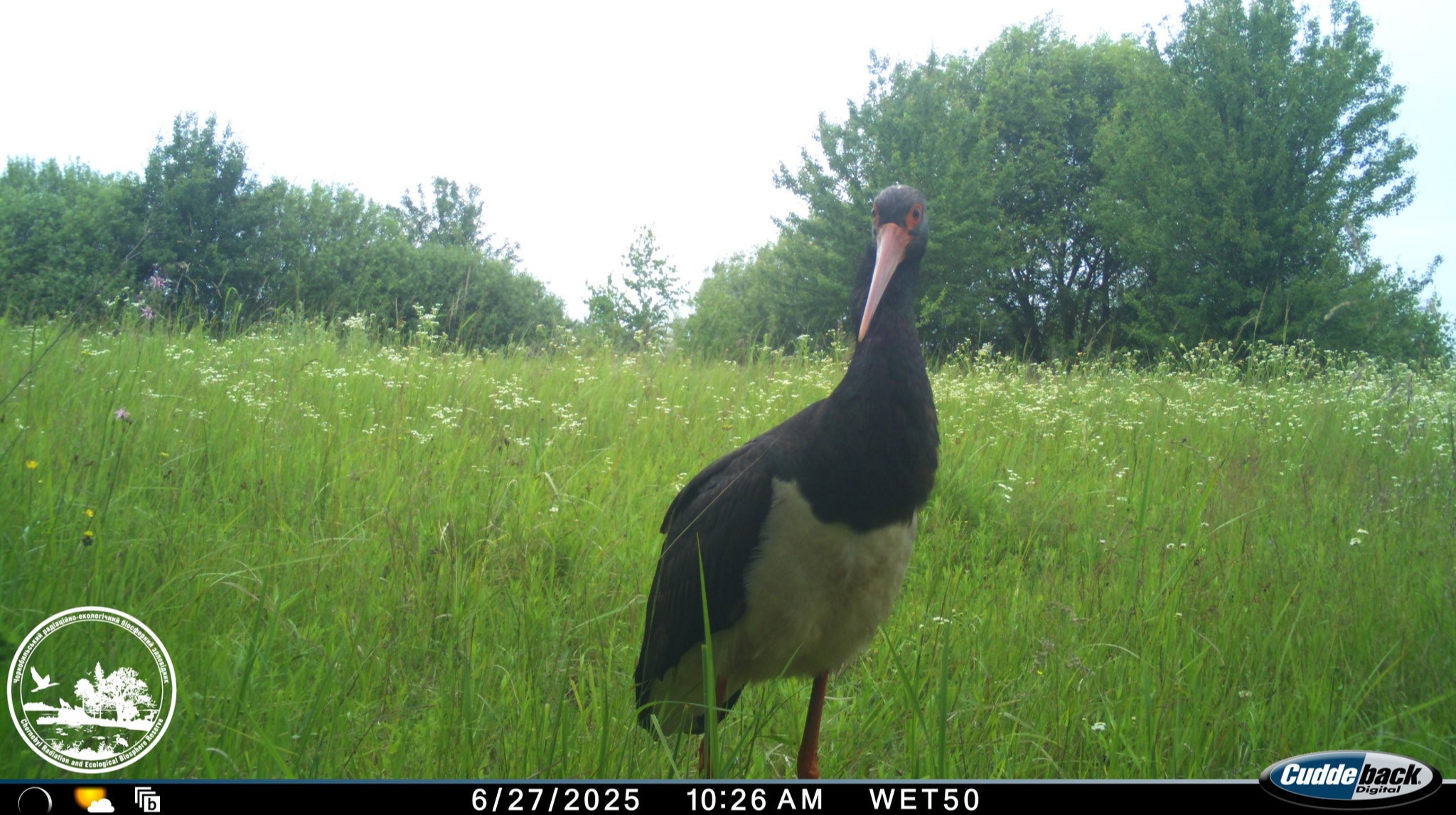“
 A camera trap captured a black stork in the Chornobyl Nature Reserve
A camera trap captured a black stork in the Chornobyl Nature Reserve
Chernobyl Radiation-Ecological Biosphere Reserve/Facebook
About this told in the Chernobyl radiation and ecological biosphere reserve.
It was possible to take a photo of the black stork (Ciconia nigra) in the summer. These birds are rarely caught in camera traps and are extremely wary. Therefore, even experienced researchers do not always manage to take high-quality pictures.
More than 20 pairs nest in the Chornobyl Nature Reserve black storks. They settle at a height of 4 to 20 meters. Nests are built in the branches of the main tree trunk or on large side branches.
The nesting success of black storks varies from year to year. In dry seasons, due to a shortage of fodder, only individual pairs breed. Others only repair or build nests.
At the same time, in recent years, the share of breeding couples has approached 50%.
In the territory of the reserve, the main enemy of these birds are white-tailed eagles, which hunt adults and sometimes steal large chicks from their nests.
Now the black storks have already left for their wintering grounds in Central Africa. The last individuals were seen on the territory of the reserve in early October.
We will remind you that there is a photo trap in the Chernobyl reserve recorded simultaneous presence of two predators: Eurasian lynx and gray owl at dawn.

”, — write: www.pravda.com.ua
 A camera trap captured a black stork in the Chornobyl Nature Reserve
A camera trap captured a black stork in the Chornobyl Nature Reserve
Chernobyl Radiation-Ecological Biosphere Reserve/Facebook
About this told in the Chernobyl radiation and ecological biosphere reserve.
It was possible to take a photo of the black stork (Ciconia nigra) in the summer. These birds are rarely caught in camera traps and are extremely wary. Therefore, even experienced researchers do not always manage to take high-quality pictures.
More than 20 pairs nest in the Chornobyl Nature Reserve black storks. They settle at a height of 4 to 20 meters. Nests are built in the branches of the main tree trunk or on large side branches.
The nesting success of black storks varies from year to year. In dry seasons, due to a shortage of fodder, only individual pairs reproduce. Others only repair or build nests.
At the same time, in recent years, the share of breeding couples has approached 50%.
In the territory of the reserve, the main enemy of these birds are white-tailed eagles, which hunt adults and sometimes steal large chicks from their nests.
Now the black storks have already left for their wintering grounds in Central Africa. The last individuals were seen on the territory of the reserve in early October.
We will remind you that there is a photo trap in the Chernobyl reserve recorded simultaneous presence of two predators: Eurasian lynx and gray owl at dawn.

